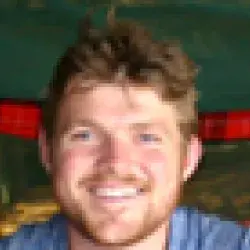25 Hours by Canoe to the Heart of the Congo
[Reporting from the Congo Heartland]
We had clear skies and a cool temperature as we pushed our two giant wooden canoes (pirogues) off the bank into the Maringa River. The crowd that had gathered to watch us pack now waved and shouted, wishing us bon voyage.
Two pirogues, 14 people, 16 cans of fuel, 12 or so trunks and bags of gear, sacks of rice and food staples, two complete satellite internet dishes, a crate or two of beer, a backpack full of cash to pay park guards, and some fresh wriggling catfish thrown on top for good measure.
For the first couple hours we sat quietly in our small Congolese wood-and-wicker chairs, watching the forest pass us. There was no river bank. The water simply met the wall of trees and flooded inland.
Every now and then we passed a small encampment (homestead? village?) and the people came out of their simple bamboo and thatch homes and watched us go by. A fisherman in a long, shallow and slender pirogue would shout a greeting, holding up fresh fish to sell.
[caption id="attachment_214" align="aligncenter" width="300" caption="Congo fishermen in a pirogue: The art of not tipping."] [/caption]
[/caption]
The water of the Maringa – which is a major tributary of the famous Congo River – was deep black. Not dark and murky like coffee – more glossy like a hard black candy. The river is wide and shallow; the surface was still and reflected vivid images of trees or other boats.
I can’t resist the cliché of quoting from Heart of Darkness, as Marlow slogs up the Congo in search of the mad Mr. Kurtz:
“Going up that river was like travelling back to the earliest beginnings of the world, when vegetation rioted on the earth and the big trees were kings.”
I’ll leave out the bits about despair, losing your mind, and utter gloom.
[caption id="attachment_215" align="aligncenter" width="300" caption="Part of the team on one of the pirogues heading up river. Jef on the left, me, and Joseph on the right."] [/caption]
[/caption]
A few hours later we pushed aside the chairs as best we could, rolled out a tarp and voila! – we were set for sleep. We lay there like slugs wrapped in our rain jackets.
I managed to sleep but woke up a few hours later with my entire right arm asleep and my legs soaking in a puddle. I rang the flight attendant for a pillow and warm blanket, but she never came so I rolled to my other side and shivered until dawn.
Just past 6am we stopped at one of the encampments to have a toilet break and brew some coffee. The people living here greeted us warmly, not even surprised that two boatloads of strangers showed up to use their fire and pee behind their house. “This is the way it is here,” Jef said. “It’s no problem.”
We continued upriver for another several hours and then the river split. Valentin Omasombo W`Otoko, our Protected Area Manager / conservation scientist, who’s research camp is our destination, excitedly told us that we were now on the Lomako river which bordered the Lomako reserve.
I’m not making this up: soon after we entered the reserve, we started seeing wildlife that was not present downstream. A group of white egrets perched on a snag didn’t take flight. A black mangabey fed on fruits in the canopy. Five Black-casqued Wattled Hornbills glided over us. A black and white colobus jumped through trees, the long white hair on his back could be seen.
“A couple years ago, you would not see that,” Jef said. “They would have heard us coming and escaped into the forest.”
The sun was out in full force now and sat there baking. Tsetse flies found us. We scrambled to swat them but one found its way up my trousers and got me good. “Don’t let it bite you,” I was told after a couple juicy welts were already swelling.
[caption id="attachment_216" align="aligncenter" width="300" caption="There is no river bank - just a wall of forest meeting the waters of Lomako."] [/caption]
[/caption]
Several hours later, hungry, tired and dehydrated we arrived in the village of Lingunda, where we will spend two nights.
This is the way of life for our staff in the Congo Heartland. Traveling to a project site takes 25 hours in a canoe complete with cold rain, hot sun, biting tsetse flies. Yet no one complains.
And as I learned the following day, this is not even the most challenging part of their work environment.
